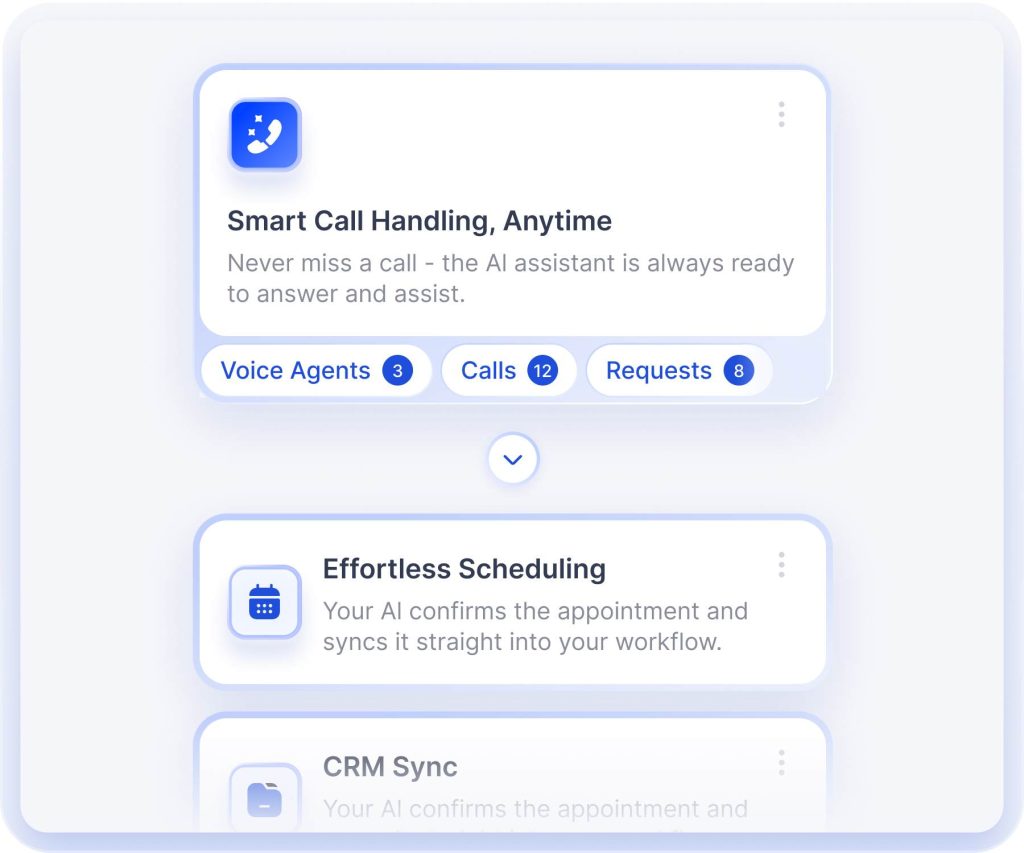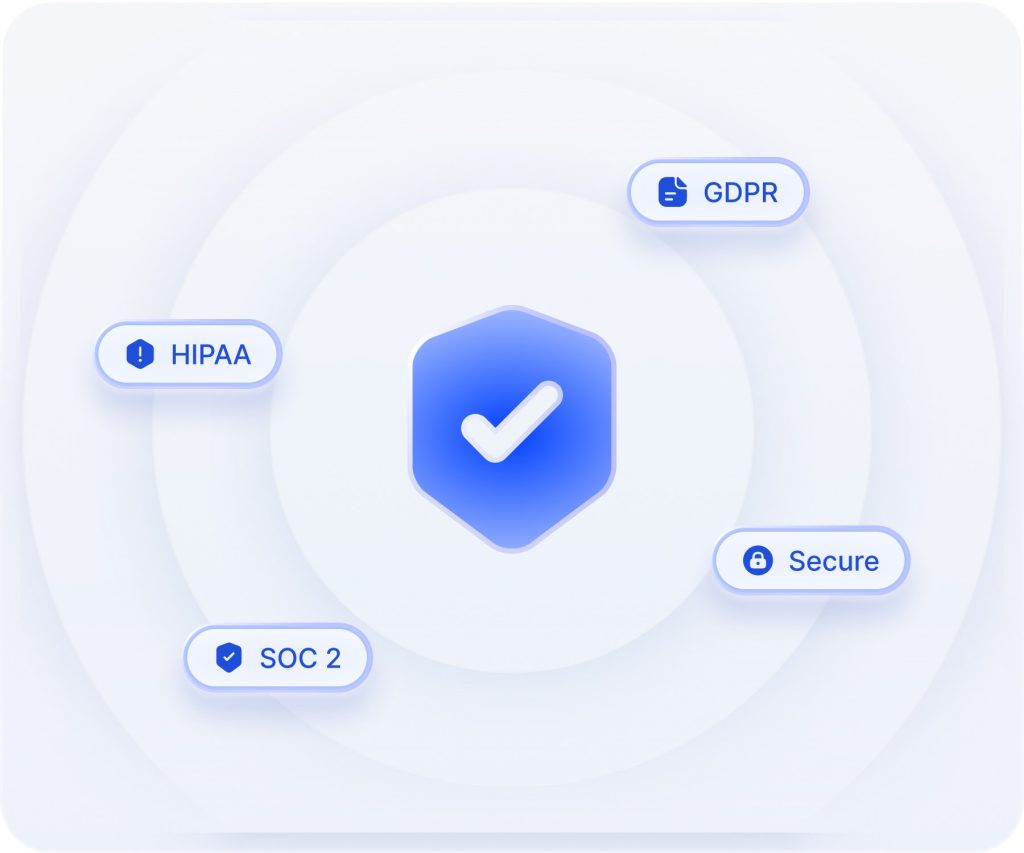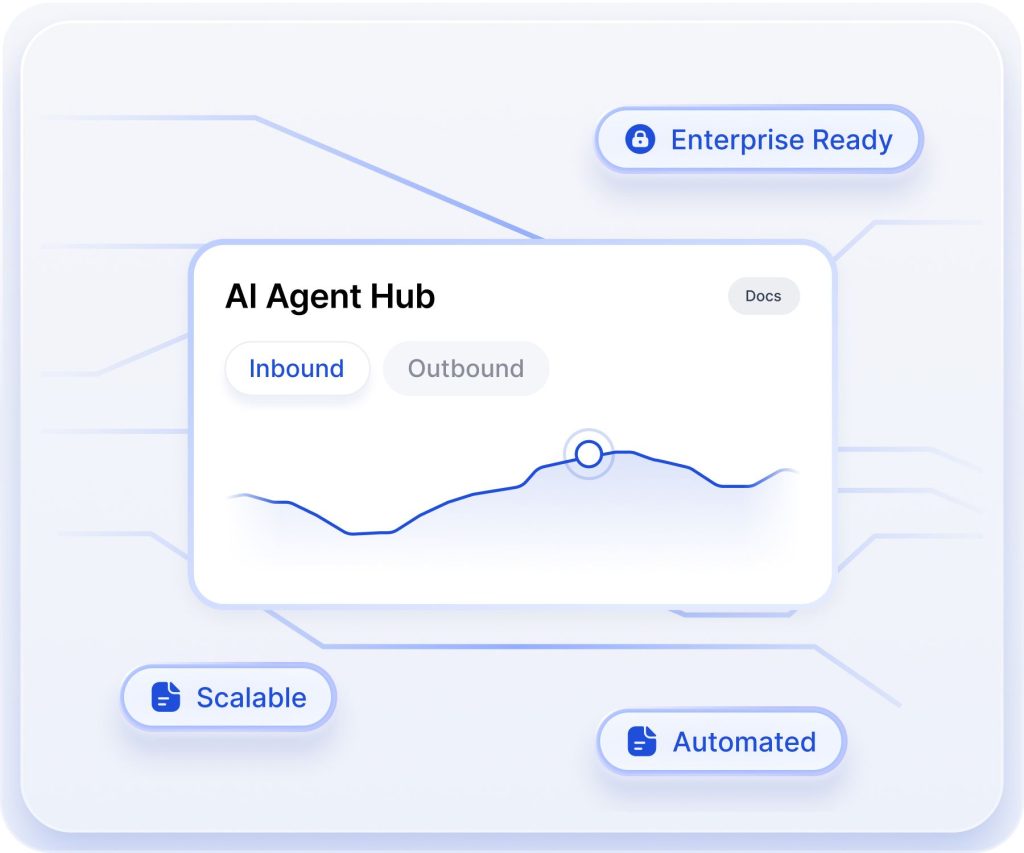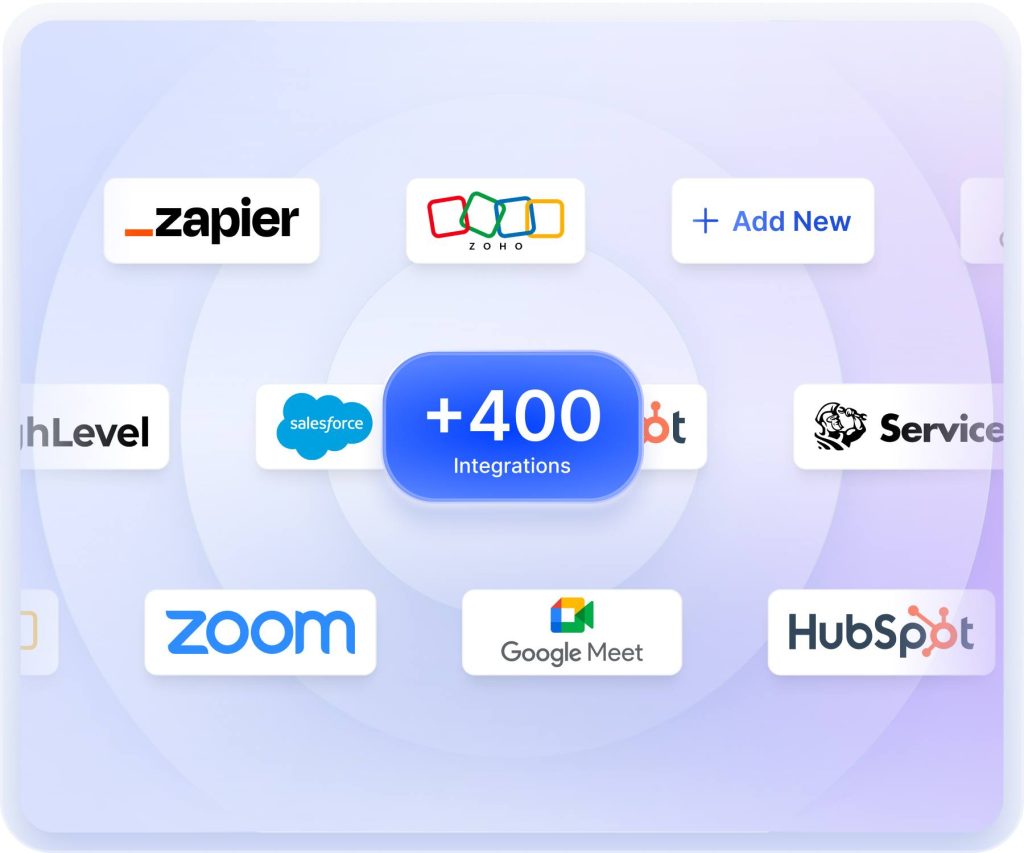Conversational AI Insurance for Claims Efficiency and Premium Growth
Transform your insurance experience with Conversational AI Insurance.
Discover Conversational AI Insurance
Rapid deployment & enterprise-ready
Deploy native integrations with Guidewire, Duck Creek, or your policy systems in as little as six weeks and avoid core system overhauls. Our integration uses standard APIs and keeps your teams in control during rollout and testing.

Conversational AI Insurance Benefits

Cut claims processing costs while improving experience
Reduce claims operational cost by up to 55 to 70 percent by automating routine first notice of loss, documentation collection, and status updates. The result is faster settlements, fewer manual reviews, and a lower cost-per-claim without sacrificing empathy.

Reduce churn and increase premium retention
Conversational AI Insurance helps carriers reduce policyholder churn by 20 to 30 percent through empathetic, contextual support during claim moments. That outcome converts volatile touchpoints into opportunities for retention and targeted cross-sell recommendations.

Handle catastrophic volumes without emergency staffing
Scale claim intake 20x during hurricanes or wildfire seasons without temporary hires. The platform routes complex claims to adjusters with full conversation history so your specialists focus on high-value work and turnaround time drops.

Drive measurable NPS and FCR improvements
Expect 75 percent or higher first-contact resolution for routine inquiries and faster average handling times. Improving these KPIs directly lifts Net Promoter Score and reduces downstream follow-up work for your teams.
How Conversational AI Integrates with Insurance Systems
Native connectors to policy and claims platforms
Native connectors to Guidewire, Duck Creek, Insurity, and other systems provide real-time policy and claims context. That context enables precise coverage guidance and reduces handoff friction between AI agents and adjusters.
Secure identity, verification, and data handling
The platform supports caller verification by policy number, postcode, and personal identifiers while offering zero-retention modes and end-to-end encryption. Those controls let teams automate sensitive interactions while keeping an auditable trail for compliance reviews.
Brand-aligned AI voice and empathetic routing
Custom AI voices are tuned to match your brand and policyholder expectations. Conversation intelligence adjusts tone and pacing for stressed claimants and routes high-complexity calls to specialists with conversation history attached.
Deployment, testing, and continuous improvement
A phased rollout begins with a pilot and expands as models learn from real interactions. You receive searchable transcripts and analytics so your team can iterate on intent coverage and improve outcomes over time.

Insurance Use Cases and Workflows

Property and casualty catastrophic claims
Automated first notice of loss with damage assessment and photo upload accelerates response during storms. Integration with claims management systems allows the agent to collect evidence, triage priority cases, and schedule adjusters without manual re-entry.

Auto accident reporting and coordination
24/7 accident reporting captures location, parties, and photo evidence while flagging fraud indicators. The platform coordinates rentals and repair appointments and hands off complex cases to an agent with the full conversation context.

Health insurance authorizations and member support
Automated prior authorization checks, provider directory lookups, and coverage explanations reduce member confusion and processing delays. The conversational layer explains deductibles and benefits in plain language, improving member satisfaction.

Onboarding, retention, and cross-sell moments
Personalized onboarding walks new policyholders through coverage highlights and optional add-ons. Life event detection surfaces cross-sell and upsell recommendations at the right moment to grow premium per policyholder.
Proof Points and Insurance ROI
Independent ROI validations
Carrier deployments show multi-hundred percent ROI in holdout testing. Customers reported up to 375 to 391 percent ROI over a 24-month period by converting routine claims work into automated, measurable value.
Operational KPIs you can expect
Expect 75 percent first-contact resolution for common claim inquiries and under-45-second response during surge events. Those gains reduce repeat contacts, lower call center spend, and improve policyholder satisfaction scores.
Case snapshots with measurable outcomes
Example results include $18M in annual premium growth from cross-sell, 60 percent reduction in claims processing costs, and significant NPS improvements. Each snapshot ties improvements to specific workflows and integration points.
Performance guarantees and SLAs
Carrier engagements include enterprise SLAs and white-glove support. Expect predictable uptime, disaster recovery, and performance metrics that align with your regulatory and service requirements.

Deploying Conversational AI in Your Insurance Organization
Pilot scope and expected timeline
A typical pilot runs six to eight weeks covering integration, conversation design, and compliance validation. You will see working AI agents handling live interactions and delivering initial KPI improvements before wider rollout.
Integration and deployment steps
Integration begins with policy and claims system connectors, followed by secure data access and conversational flow customization. Regular syncs with your teams ensure handoffs, escalation rules, and adjuster routing meet operational needs.
Support model and service level agreements
Carrier engagements include tailored SLAs and a dedicated support team. That white-glove support covers compliance checks, model updates, and ongoing optimization so your teams focus on high-value exceptions.
Commercial options and performance pricing
Options include performance-based pricing tied to satisfaction or resolution gains, fixed subscription with support tiers, or transaction-based models. Pricing is designed to align vendor incentives with measurable business outcomes.

Frequently Asked Questions About Conversational AI Insurance
How does Conversational AI Insurance protect policyholder data?
Our platform uses end-to-end encryption and supports zero-retention mode so sensitive audio and transcripts are never stored unless you authorize it. Compliance certifications including SOC2, GDPR, and HIPAA provide an auditable control framework that aligns with carrier security requirements and privacy policies.
Can Conversational AI Insurance integrate with my existing policy systems?
Yes. Native connectors and API-first architecture allow integration with Guidewire, Duck Creek, Insurity and major claims systems. Real-time policy access ensures conversations are informed by coverage and billing status so agents and AI provide accurate guidance without replacing your core systems.
What metrics should we expect after deployment?
Carriers typically see 75 percent or higher first-contact resolution for routine claims and inquiry flows, a 20 to 30 percent reduction in churn tied to improved claims handling, and major reductions in claims processing cost. Those metrics are measured via configurable dashboards and validated against baseline telemetry.
How quickly can we go live with a pilot?
A focused pilot can be live in six weeks including integration and initial conversational design. The pilot produces usable interactions, transcripts, and early KPI improvements so you can validate performance before scaling across products and geographies.
Will conversational agents escalate complex claims correctly?
Agents use intelligent triage and context retention to escalate complex cases to specialized adjusters with full conversation history and preliminary assessment data. This results in faster specialist response and fewer repeated questions for policyholders, improving satisfaction and resolution speed.
How does the platform handle fraud detection during claims intake?
Conversational intelligence analyzes patterns and flags suspicious indicators during initial loss reporting while preserving a respectful experience for valid claimants. Fraud signals are delivered to adjusters with contextual details so investigations begin earlier and more effectively.
What support and SLAs come with enterprise deployments?
Deployments include tailored SLAs, white-glove support, and ongoing optimization. Support covers uptime guarantees, disaster recovery planning, compliance checks, and model refinements so operational teams can rely on predictable performance during peak events.
How do we measure premium growth attributable to Conversational AI Insurance?
Cross-sell and retention attribution combine conversational signals, campaign tracking, and policy issuance data to quantify premium growth. We provide dashboards that correlate conversation events to new premiums and retention metrics so finance teams can validate ROI.